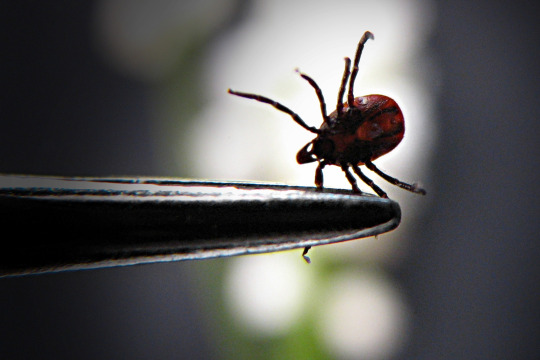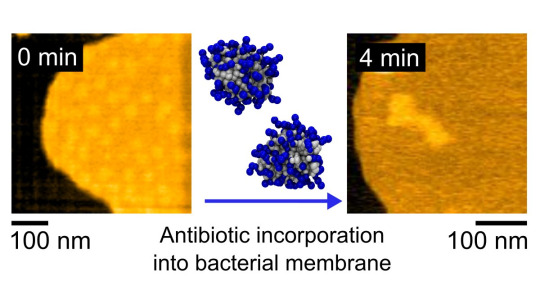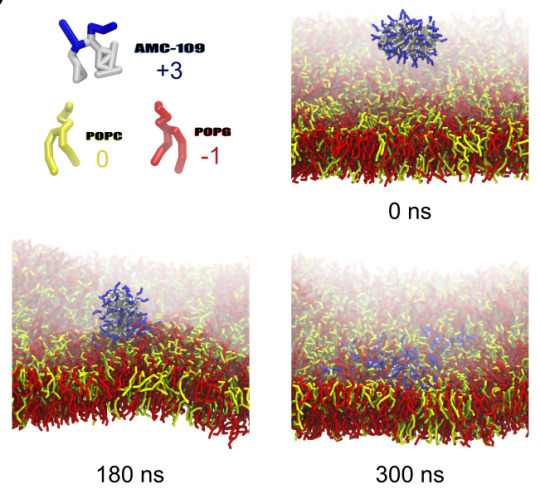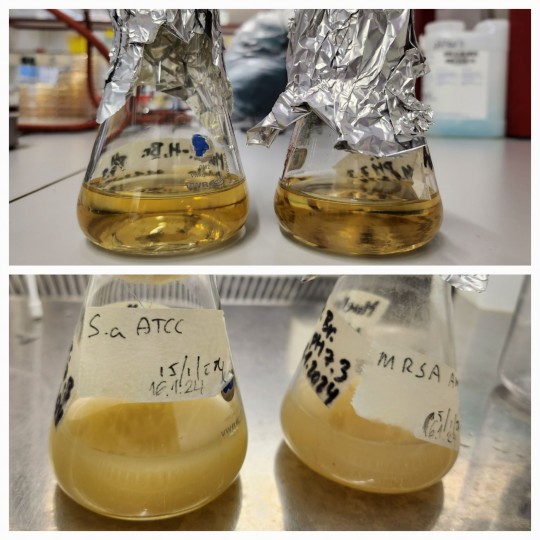#antibiotic
Explore tagged Tumblr posts
Text
Good News From Israel
Israel's Good News Newsletter to 2nd Feb 2025
In the 2nd Feb 25 edition of Israel’s good news, the highlights include:
An Israeli university offers full scholarships to freed Gaza hostages.
An Israeli life-support system is being deployed to US hospitals.
The Head of Hadassah hospital saved a passenger on an El Al flight.
Israeli organizations saved lives in Las Angeles and Georgia.
See how cows are milked on an autonomous Israeli dairy farm.
Israeli tech will protect India and its trains.
You can behave like an animal at a new Israeli zoo.
Buy a home in Israel – while you can.
Read More: Good News From Israel

The portions of the Torah read in most synagogues during the last two weeks included the hardening of Pharaoh's heart and its disastrous consequences for Egypt. In contrast there have been many recent heartening and enheartening events and activities in Israel which are strengthening the nation and benefiting the world.
Medical news includes the US launch of a unique Israeli respiratory system to boost the heart's function of oxygenating the blood in life-support patients. Read how Israeli charity Belev Echad ("One Heart") helps rehabilitate wounded IDF soldiers. The AI system of Israeli emergency NGO United Hatzalah sent its EMTs to a shopping mall to treat a heart attack patient that it had predicted would need saving. And it certainly was a heart-stopping moment when an El Al passenger had a heart attack and was saved thanks to the Head of Hadassah hospital being on the flight.
There have been many enheartening stories in the last week, not least that of released hostages being reunited with their loved ones. The sight of Israeli SmartAID volunteers restoring power to dialysis patients in Los Angeles. New housing for Israeli lone soldiers. Free scholarships for ex-hostages at Israeli Universities. And the Swedish Member of the European Parliament who fights anti-Zionism.
Finally, thanks to the generous hearts of Australians who made cases for mezuzahs that will be fixed to the doors of residents of Israel returning to their rebuilt homes. And we hope that the heart of 101-year-old Walter Bingham, the world's oldest journalist, will keep beating until he reaches 120.
The photo is of early spring roses emerging on top of Netanya's "Wall of Hearts".
#antibiotic#astronaut#bees#clowns#El Al#Gaza#good news#hostages#IDF#Iron Beam#Israel#Jerusalem#Jewish#JNF#microbiome#mosquitos#Muslim#robots#sleep#ventilator
60 notes
·
View notes
Text

On this September 28, 2024, Cookie wishes you a clinical 95th anniversary to the bacteria-killing mold being noticed by Alexander Fleming while growing in his laboratory - later known to be penicillin (1928)!
#cat#cats#cookie#2024#cookie wishes you#cute cats#date#history#animals#this day in history#penicillin#science#medicine#antibiotic
67 notes
·
View notes
Text
My paper featured in the 50 best microbiology papers!
Our discovery of a new antibiotic target in bacteria was selected by a Nature Communications editor as one of the 50 best recently published papers in Microbiology and infectious diseases.
Search for "Lateral membrane organization" among the featured articles to find the research that I coordinated:
This surely gives me a boost for my next scientific work! Although it took ages to publish it (4 years this one) and A LOT of frustration, it was worth it!
#science#research#postdoc#women in science#biophysics#microbiology#infectious diseases#bacteria#antibiotic#antimicrobial resistance#featured#top 50#best articles#boost#original content
43 notes
·
View notes
Link
2 notes
·
View notes
Text
Dị ứng thuốc nếu không được chữa trị sớm và đúng cách có thể khiến bệnh nhân gặp phải nguy hiểm, đe dọa đến cả tình mạng. Vậy dị ứng thuốc là gì? Cách xử lý khi bị dị ứng thuốc ra sao?
#thuocdantoc#thuốc_dân_tộc#health#diung#diungthuoc#Allergy#Antibiotic#Medicine#health and wellness#healthcare#wellness#health & fitness#health tips
5 notes
·
View notes
Text
A protein found in human sweat may protect against Lyme disease
New Post has been published on https://thedigitalinsider.com/a-protein-found-in-human-sweat-may-protect-against-lyme-disease/
A protein found in human sweat may protect against Lyme disease


Lyme disease, a bacterial infection transmitted by ticks, affects nearly half a million people in the United States every year. In most cases, antibiotics effectively clear the infection, but for some patients, symptoms linger for months or years.
Researchers at MIT and the University of Helsinki have now discovered that human sweat contains a protein that can protect against Lyme disease. They also found that about one-third of the population carries a genetic variant of this protein that is associated with Lyme disease in genome-wide association studies.
It’s unknown exactly how the protein inhibits the growth of the bacteria that cause Lyme disease, but the researchers hope to harness the protein’s protective abilities to create skin creams that could help prevent the disease, or to treat infections that don’t respond to antibiotics.
“This protein may provide some protection from Lyme disease, and we think there are real implications here for a preventative and possibly a therapeutic based on this protein,” says Michal Caspi Tal, a principal research scientist in MIT’s Department of Biological Engineering and one of the senior authors of the new study.
Hanna Ollila, a senior researcher at the Institute for Molecular Medicine at the University of Helsinki and a researcher at the Broad Institute of MIT and Harvard, is also a senior author of the paper, which appears today in Nature Communications. The paper’s lead author is Satu Strausz, a postdoc at the Institute for Molecular Medicine at the University of Helsinki.
A surprising link
Lyme disease is most often caused by a bacterium called Borrelia burgdorferi. In the United States, this bacterium is spread by ticks that are carried by mice, deer, and other animals. Symptoms include fever, headache, fatigue, and a distinctive bulls-eye rash.
Most patients receive doxycycline, an antibiotic that usually clears up the infection. In some patients, however, symptoms such as fatigue, memory problems, sleep disruption, and body aches can persist for months or years.
Tal and Ollila, who were postdocs together at Stanford University, began this study a few years ago in hopes of finding genetic markers of susceptibility to Lyme disease. To that end, they decided to run a genome-wide association study (GWAS) on a Finnish dataset that contains genome sequences for 410,000 people, along with detailed information on their medical histories.
This dataset includes about 7,000 people who had been diagnosed with Lyme disease, allowing the researchers to look for genetic variants that were more frequently found in people who had had Lyme disease, compared with those who hadn’t.
This analysis revealed three hits, including two found in immune molecules that had been previously linked with Lyme disease. However, their third hit was a complete surprise — a secretoglobin called SCGB1D2.
Secretoglobins are a family of proteins found in tissues that line the lungs and other organs, where they play a role in immune responses to infection. The researchers discovered that this particular secretoglobin is produced primarily by cells in the sweat glands.
To find out how this protein might influence Lyme disease, the researchers created normal and mutated versions of SCGB1D2 and exposed them to Borrelia burgdorferi grown in the lab. They found that the normal version of the protein significantly inhibited the growth of Borrelia burgdorferi. However, when they exposed bacteria to the mutated version, twice as much protein was required to suppress bacterial growth.
The researchers then exposed bacteria to either the normal or mutated variant of SCGB1D2 and injected them into mice. Mice injected with the bacteria exposed to the mutant protein became infected with Lyme disease, but mice injected with bacteria exposed to the normal version of SCGB1D2 did not.
“In the paper we show they stayed healthy until day 10, but we followed the mice for over a month, and they never got infected. This wasn’t a delay, this was a full stop. That was really exciting,” Tal says.
Preventing infection
After the MIT and University of Helsinki researchers posted their initial findings on a preprint server, researchers in Estonia replicated the results of the genome-wide association study, using data from the Estonian Biobank. These data, from about 210,000 people, including 18,000 with Lyme disease, were later added to the final Nature Communications study.
The researchers aren’t sure yet how SCGB1D2 inhibits bacterial growth, or why the variant is less effective. However, they did find that the variant causes a shift from the amino acid proline to leucine, which may interfere with the formation of a helix found in the normal version.
They now plan to investigate whether applying the protein to the skin of mice, which do not naturally produce SCGB1D2, could prevent them from being infected by Borrelia burgdorferi. They also plan to explore the protein’s potential as a treatment for infections that don’t respond to antibiotics.
“We have fantastic antibiotics that work for 90 percent of people, but in the 40 years we’ve known about Lyme disease, we have not budged that,” Tal says. “Ten percent of people don’t recover after having antibiotics, and there’s no treatment for them.”
“This finding opens the door to a completely new approach to preventing Lyme disease in the first place, and it will be interesting to see if it could be useful for preventing other types of skin infections too,” says Kara Spiller, a professor of biomedical innovation in the School of Biomedical Engineering at Drexel University, who was not involved in the study.
The researchers note that people who have the protective version of SCGB1D2 can still develop Lyme disease, and they should not assume that they won’t. One factor that may play a role is whether the person happens to be sweating when they’re bitten by a tick carrying Borrelia burgdorferi.
SCGB1D2 is just one of 11 secretoglobin proteins produced by the human body, and Tal also plans to study what some of those other secretoglobins may be doing in the body, especially in the lungs, where many of them are found.
“The thing I’m most excited about is this idea that secretoglobins might be a class of antimicrobial proteins that we haven’t thought about. As immunologists, we talk nonstop about immunoglobulins, but I had never heard of a secretoglobin before this popped up in our GWAS study. This is why it’s so fun for me now. I want to know what they all do,” she says.
The research was funded, in part, by Emily and Malcolm Fairbairn, the Instrumentarium Science Foundation, the Academy of Finland, the Finnish Medical Foundation, the Younger Family, and the Bay Area Lyme Foundation.
#000#Analysis#Animals#antibiotic#Antibiotics#antimicrobial#approach#Bacteria#Biological engineering#Biology#Broad Institute#Cells#communications#data#Delay#Disease#disruption#engineering#eye#factor#fatigue#Finland#Foundation#Full#genetic#Genetics#genome#growth#how#human
2 notes
·
View notes
Text
New nanonets target, trap, and kill specific bacteria
New nanonets target, trap, and kill specific bacteria The nanonets could be used instead of antibiotics once fully developed. Thoughts health innovators?
The nanonets could be used instead of antibiotics once fully developed. The microscopic nets consist of antimicrobial peptides (AMPs), proteins that form a mesh when they detect certain chemicals in the bacterial cell membrane. Once the AMPs have attached themselves to the bacteria via these chemical sites, they attract other peptides, self-organizing to project long, interwoven tendrils to…

View On WordPress
#antibiotic#antibiotics#biology#biomimetic#healthinnovations#immunology#nanotechnology#resistance#resistant#science#superbug
4 notes
·
View notes
Text
Clindamycin
Clindamycin is a lincosamide antibiotic used to treat various bacterial infections, including those of the lungs, skin, blood, female reproductive organs, and internal organs. It works by inhibiting bacterial protein synthesis, effectively stopping the growth of bacteria. Available in oral, topical, and injectable forms, clindamycin is often prescribed when other antibiotics are unsuitable. Common side effects may include nausea, vomiting, diarrhea, and rash. It's essential to complete the full course as prescribed to prevent the development of antibiotic-resistant bacteria. Consult your healthcare provider for personalized advice before starting clindamycin. Get more information click on this link: https://www.edinburghpharma.in/
#cilndamycin#pharma company#antibiotic#bestpharmacompany#best pharma company in india#anti diabetic franchisee#anti-diabetic franchise#top 10best pharma#doctors
0 notes
Text
SciTech Chronicles. . . . . . . . .Feb 15th, 2025
#Diabetes#antibiotic#resistance#infection#Murchison#airplane#reflection#RFI CRISPR-Cas9#Cas9#RNA#metagenomics#Dragonfly#Titan#Methane#Ingenuity#Londinium#tribunal#70AD#preservation
0 notes
Text
We found a new antibiotic target in bacteria!!
It took almost 4 years, but the fruits of my postdoc research are finally here! In our paper (with me as the first author), just published in Nature Communications, we decipher a working mechanism of an antibiotic that targets the membrane of bacteria in an unprecedented way!
enhanced PDF: https://rdcu.be/dgj2d web version: https://lnkd.in/eRpxr4jg

And how does it work?
The antibiotic AMC-109 first self-assembles into stable aggregates with a cationic surface. These aggregates then specifically target bacteria cells and insert into their membrane.
You can see the process how we simulated it in a computer on the figure below. Grey-Blue is the antibiotic, Red-Yellow are lipids that together form a membrane.
@jmelcr did this awesome simulation work! You are an amazing scientist, jmelcr! I love you and it seems our collaboration did not ruin our marriage. Not yet, anyway 😄.

After insertion into the bacterial membrane, the antibiotic dissolves membrane nanodomains affecting membrane function without formation of any pores or holes in the membrane.
Below is the series of high-speed atomic force microscopy images that shows the process of dissolution of membrane nanodomains. Yellow are the membranes extracted from bacteria laying flat on a hard surface (black). The membranes contain nanodomains (bright yellow) that are important in living bacteria for its survival. Addition of antibiotic dissolves them.

More studies will follow that use this new target in bacteria giving us an advantage over untreatable superbugs. I will keep you posted. And... keep your fingers crossed. It's research after all, so we never know if and how well it's going to work.
#science#women in science#research#postdoc#stem#biophysics#antimicrobial#antibiotic#amr#achievement#scientific journals#publication#breakthrough#original content
54 notes
·
View notes
Text

TSRNOSS, p 690.
#sulphur#bromine#antibiotic#cysteine#sulfhydryl group#Kamchatka#fever#bears#male stags#seeds#birds#Little Ice Age#leaf canopy
0 notes
Text
Dị ứng thuốc kháng sinh xảy ra khi hệ miễn dịch phản ứng quá mức, gây hại cho cơ thể khi sử dụng hoặc tiếp xúc với các loại thuốc này. Vậy triệu chứng dị ứng thuốc kháng sinh là gì? Cách điều trị như thế nào?
#thuocdantoc#thuốc_dân_tộc#health#diung#diungthuockhangsinh#Allergy#Antibiotic#health and wellness#healthcare#wellness#health & fitness#health tips#healthyfood
5 notes
·
View notes
Text

Jesus Christ, we really are back in the roaring 20s.
#us politics#disability#The antibiotic cure for TB was developed in 1944#There's a vaccine but it's not commonly given in the USA#Do not panic but please consider masking up if you have a cough
8K notes
·
View notes
Text

1956 - A patent for an oral form of the antibiotic Penicillin was granted to Ernst Brandl and Hans Margreiter.
1 note
·
View note
Text
18 hours difference of bacteria growth

How much can Staphylococcus aureus bacteria grow in less than a day? I add a few drops of bacteria into a fresh medium (basically a meat bouillon soup) and after 18 hours I count tens of billions bacteria per milliliter. Literally, today I had 8x10^10 bacteria/ml. They grow like crazy when given the chance.
For the next 24 hours, I let them bath in antibiotics. Hehe!
#microbiology#bacteria#MRSA#staphylococcus#antibiotic#science#research#postdoc#crazy#stem#biophysics#academia#medical research#killing time#original content
18 notes
·
View notes
Text
Moxifloxacin & Dexamethasone Sodium Phosphate ophthalmic solution is a powerful combination medication designed to treat bacterial eye infections and inflammation. By blending an antibiotic and a corticosteroid, this solution provides relief from discomfort while eliminating harmful bacteria. This article delves into its uses, benefits, dosage, potential side effects, and answers to frequently asked questions.
#Moxifloxacin & Dexamethasone Sodium Phosphate Ophthalmic#Zexus Pharma#Moxifloxacin & Dexamethasone Sodium Phosphate ophthalmic solution#bacterial eye infections#inflammation#antibiotic#fluoroquinolone antibiotic#swelling in the eye#Uses of Moxifloxacin & Dexamethasone Sodium Phosphate Ophthalmic Solution#Post-Surgical Care#Uveitis#Corneal Ulcers#zexus pharma
0 notes